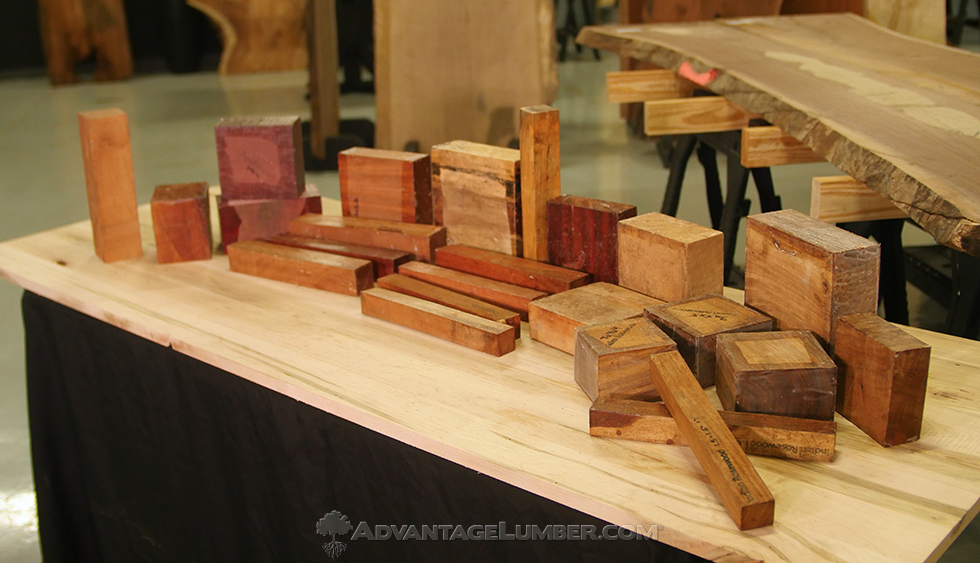- Scientific Name
- Melia azedarach
- Common Name(s)
- Chinaberry
- Distribution
- Southern Asia, Australia and Oceania
- Average Dried Weight
- 38 lbs/ft3 (610 kg/m3)
- Specific Gravity
- Basic: .47, 12% MC: .61
- Janka Hardness
- 990 lbf (4,400 N)
- Modulus of Rupture
- 14,100 lbf/in2 (97.2 MPa)
- Elastic Modulus
- 1,300,000 lbf/in2 (8.97 MPa)
- Crushing Strength
- 8,100 lbf/in2 (55.9 MPa)
- Shrinkage
- Radial: 5.0%, Tangential: 8.5%, Volumetric: 13.6%, T/R Ratio: 1.7
- Appearance
- Color can range from a light pinkish orange to a deeper reddish brown. Color becomes darker upon prolonged exposure to light. Well-defined sapwood is a lighter yellow.
- Texture
- Grain is usually straight, though occasionally interlocked. Texture is coarse and uneven, though with a pronounced natural luster. Endgrain: Ring-porous (or sometimes semi-ring-porous); 2-4 rows of large earlywood pores, small to medium latewood pores in tangential, diagonal, or clustered arrangement; reddish brown heartwood deposits present in earlywood; rays may be just barely visible without lens; parenchyma vasicentric, confluent, and banded (marginal).
- Rot Resistance
- There are many conflicting reports on Chinaberry’s durability. The heartwood is generally considered at least moderately durable, and somewhat resistant to insect attack.
- Workability
- Due to it’s moderate density and generally straight grain, Chinaberry is quite easy to work: it cuts, planes, sands, and glues well. Perhaps the only difficulty is in its large pores, which tend to give a very open and grainy finished appearance, which may need to be filled, particularly if a smooth glossy surface is desired. (Though if left as-is, it serves well in applications where a rustic look is desired.)
- Odor
- No characteristic odor.
- Allergies/Toxicity
- Although severe reactions are quite uncommon, Chinaberry has been reported to cause skin and respiratory irritation, as well as headaches.
- Pricing/Availability
- Not commercially available as lumber, Chinaberry is mostly restricted to smaller-scale and hobbyist uses. Most pieces available in the United States are not imported, but are harvested from (introduced) locally grown trees. Prices should be moderate for such a specialty species.
- Sustainability
- This wood species is not listed in the CITES Appendices or on the IUCN Red List of Threatened Species.
- Common Uses
- Veneer, carvings, furniture, and turned objects.
- Comments
- Sometimes called “Persian Lilac,” though the name usually rather refers to a hybrid lilac in the Syringa genus. Chinaberry is not closely related to true lilacs, but is rather related to the various types of Mahogany in the Meliaceae family. Chinaberry is a potentially commercially valuable timber tree throughout its natural range in Asia, though perhaps under-utilized and under-appreciated. Chinaberry has also been introduced in the southeastern United States as an ornamental tree, though it’s now considered by many to be an invasive species.


